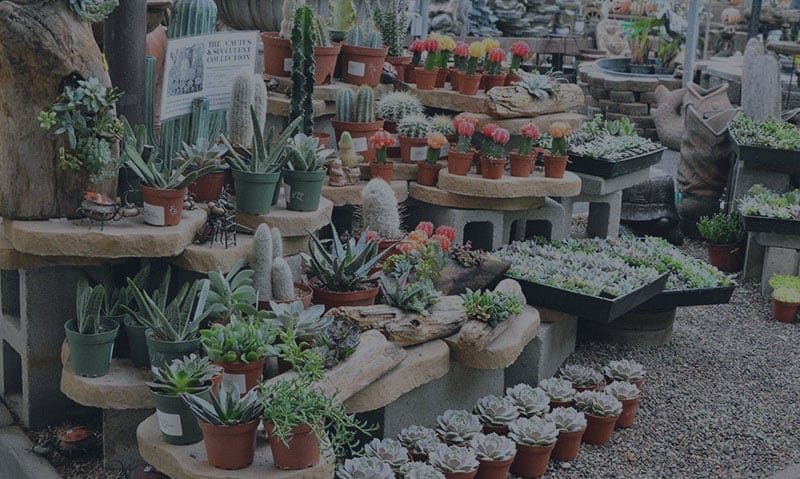Newsletter Articles
Fire Safe Planting Strategies for Hillside Homes in Southern California
Written by Kelsey W.
One of the most important steps you can take in keeping your home safe from fire during dry conditions and when the risk of fire is high is by employing fire safe planting strategies.
While you may assume that the only safe strategy is to completely clear your home of any sort of greenery and plantings, you don’t need to make your home look like the barren hills of the Sahara to keep your property safe in the event of a fire.
Did you know that some plants feature fire-resistant properties? Further, many plants that are naturally resistant to fire are native to Southern California, which makes them easy and natural additions to your home.
Let’s learn more about how you can beautify your home with plants while also doing what you can to protect your property from the threat of wildfires.
Fire-Resistant Plants for Southern California Homes
While no plant is fully resistant to fire, there are some types that are quite resistant to fire. Therefore, should a fire occur in your neighborhood or near your home, your plants may survive the devastation or burn slowly enough that they aren’t fully burned and recover in time.
Further, since these plants are unlikely to burn at a high rate, they might slow the reach and speed of the fire, which can prove incredibly beneficial when first responders are engaged in trying to stop the advance of an encroaching fire.
One of the challenges of creating a safe space for plants around a hillside home that might otherwise sit in an area vulnerable to fire is finding plants that have high water content or that are naturally moist. Planting a tropical paradise of moist plants around your home might sound great, but Southern California isn’t a tropical environment and there are better native options.
Southern California has a dry climate for most of the year, so it makes sense that many of the plants would also exist in a dry state, right? In actuality, some of the best fire-resistant plants are not only full of water naturally but they’re also native to Southern California, which makes them great choices.
Some of the best options for keeping a hillside intact are groundcover succulents, since these plants provide three types of protection for your property:
- Succulent groundcovers hold the soil in place, guarding against mudslides, which often occur in the days or months after a fire.
- The water within succulent groundcovers helps slow the spread of fire and can give first responders time to reach your property to save it.
- Many succulent groundcovers are native to Southern California, so they’re relatively easy to care for and will provide natural beauty without a lot of effort.
Sedum or stonecrop is probably one of the best choices for a succulent groundcover. Not only can this sturdy plant hold onto steep hillsides, but it can also offer an alternative to a traditional turf grass lawn, which requires a lot of upkeep.
Try to avoid going with the popular yet invasive ice plant. Although ice plant is quite hardy and able to survive quite a lot, it’s an invasive plant that can quickly take over and push out native plantings, which means it’s probably not the best option for planting in a wild area where it could spread beyond the borders of your property.
There are quite a few plants with slightly taller footprints that you may consider in addition to or instead of sedum. Three excellent native options are California lilac plants, California fuchsia, and red monkey flowers.
Red Bush Monkey Flowers
The foliage of red monkey flowers is unlikely to catch fire, so you can plant these near your home and they will reduce the likelihood of a floating ember from a wildfire igniting the plant and catching your entire property on fire.
California Fuchsia
Meanwhile, California fuchsia doesn’t have a lot of foliage, which means it has a low level of combustible material. If a plant doesn’t have a lot of material for fire to burn, the fire will have a tough time growing and spreading.
California Lilac
Finally, California lilac plants possess a low amount of resin, which is a material inside the plant that can create a very flammable environment. California lilac leaves are also relatively moisture-rich, so they’re unlikely to act as a source of ignition for fire.
Can Trees Resist Fire?
You may have seen videos of them or even seen them in person, but some amazing plants, like the Giant Redwoods of Northern California and the Giant Sequoias of Central California, are capable of surviving a devastating fire and growing for hundreds of years after that devastating event.
Are there any trees you can plant in your backyard that can also survive the onslaught of a fire? In Southern California, the coast live oak is one of the best options. Don’t let the name fool you, however. The coast live oak isn’t found solely within a stone’s throw of the ocean.
They’re actually found across vast areas of the state and commonly grow on hillsides and canyons. If you’ve ever taken a hike in the Verdugo Mountains area, which are the hillsides north of Glendale, Eagle Rock in Los Angeles, and some of Pasadena, you’ll have seen thousands of these mature trees.
The only downside in planting a coast live oak is that they do take decades to mature, so planting one on your property is a long term project but one that may eventually yield incredibly gorgeous results. As an alternative, you can consider a citrus tree, depending on the location of your home.
You can usually start to enjoy yields from your citrus tree in much less time than it would take for an oak tree to mature, and they’re considered a moderately fire-resistant plant. The only caveat is that the severity of the fire may impact the tree’s ability to produce fruit in the future.
However, if your primary goal is figuring out how to keep your property safe in the event of a fire, a citrus tree is an excellent option because they don’t ignite easily and they’re an ally in helping to slow the spread of fire.
Designing Fire-Resistant Landscaping
In any landscaping design plan, you’ll have a general layout of where you’ll put various plants in relation to your home and around your property. When it comes to fire-resistant landscaping, this design will include specific features like a “fire break” and fire-resistant plants.
A fire break is essentially a certain amount of space between a line of brush or trees and your home. Cal Fire divides homes into three zones when it ocmes to designing a “defensible space” around the home.
Zone Zero is the area immediately around the home and should be kept clear of things that might ignite. This means removing dead plants and avoiding combustible landscaping features like decorative bark mulch. While mulch can certainly beautify your garden, it’s not always the best option in fire-safe landscaping.
Zone One encompasses thirty feet around your home, and it’s where you should maintain clear space with limited bushes, trees, and large landscaping features. It’s important to remove dying or dead brush from this area, particularly in drought conditions when you’re not watering frequently.
Zone Two is the outer reaches of the property, extending to 100 feet from the home or to the property line. Obviously, not all properties have 100 feet of space around every side, but this length is mandated by law, so it’s essential to keep areas in the outer reaches of the property trimmed and clear of excess brush.
Not surprisingly, adding fire-resistant landscaping features around your home is one of the best options for beautifying your property while still maintaining the safe, clear space Cal Fire recommends and state law requires.
Should You Use a Ton of Water on Your Lawn to Avoid Fire?
You may assume that the best way to eliminate fire risk is to just douse your home with a ton of water, but that’s not a particularly realistic thing to do when it comes to protecting your vulnerable property from fire. Sure, water is something you can employ during an emergency, but it’s not an element you should rely upon in excess to keep your property extra moist.
A better option is to choose plants that are naturally resistant to fire and design your landscaping to minimize the likelihood that a fire would spread quickly across your property. Plants that are resistant to fire and that may not even catch fire are a much better option than highly flammable plants drenched with gallons and gallons of water.
Let Us Help You Choose the Ideal Plants for Your California Hillside Home
No one wants to think about their home falling to the ravages of a wildfire, but fire season each year in Southern California brings stark reminders that we must all keep watch. Let the gardening professionals at Green Thumb Nursery help you develop a fire-resistant landscaping plan with native plants for your Southern California home.
Do you like what you see? Sign up for our weekly newsletter to get content like this every week!
CLICK HERE TO SIGN UP!


